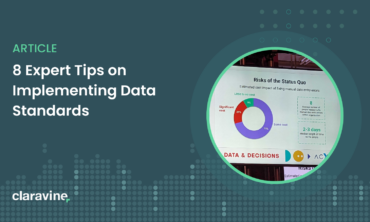Running Your Enterprise on Premium Data
Suppose you were lucky enough to own a Lamborghini or some other outrageously expensive and powerful luxury car. What kind of fuel would you use to fill its engine? It is common knowledge, even among people who know little about cars, that luxury car engines require a higher-octane fuel. If you happened to own such a car, you would be wise to purchase more expensive fuel to preserve the life of the engine. Trying to economize by buying low-octane fuel would likely result in the dreaded knocking; a sign that that fuel is combusting as a result of pressure in the engine cylinder, rather than being ignited by the spark plug. It’s explosive, all right, but the power is wasted. Rather than powering your car, such explosions act like a bomb going off repeatedly, damaging your engine.
According to The Economist: knocking needs to be avoided at all cost. If allowed to continue, it can quickly cause an engine to disintegrate… The stresses caused by suddenly trying to reverse the rotation of the engine can become high enough to shatter the pistons, connecting rods and parts of the crankshaft.
I will try not to belabor the metaphor, but it’s a good one to keep in mind for many of the issues surrounding marketing data, and specifically the way a company’s Analytics system (in this case the car) is often viewed as the problem when performance breaks down, without consideration of the quality of data (the fuel) going in. There will probably come a time when it is common knowledge that your marketing analytics and attribution tools are only as good as the data flowing into them. Alas, we have not crossed that threshold.
We still see enormous Fortune 500 companies filling their Lamborghini engines with low octane fuels, which we can think of as sub-optimally or partially tracked data. Worse, some organizations have forsaken the effort necessary to effectively track their data and have forfeited any insight beyond the bare basics. I like to think that’s the equivalent of filling your high-performance engine with a moonshine malt-mash, distilled out back by someone’s great-Uncle Floyd. It’s a high-risk move.
It’s hard to blame marketing executives though. Many simply have no idea that there is a better way to conduct business. They are likely aware of the problems their company has in managing tracking codes (they hear rumblings about lots of different demand-generation tactics combined with different tracking code systems being used by various tribes in the company, without a lot of consistency or standard taxonomies.) But how do they address a problem with many moving parts? They can offer specific direction: “your tracking codes should contain this pattern, and consistently use these delimiters.” Their teams, who want to succeed, will start off doing it right. But inevitably, the needs of the groups will change and the code structure will start to deviate and what follows will be a depressing array of data issues traceable to the moment when they abandoned their patterns.
For so long it has seemed like this sorry situation is unavoidable, and people have stopped even looking for solutions. They accept that current reality as the nature of the business. The Way Things Are.
Well no more.
Solutions like Claravine address the problem where it lies — with the data (the fuel), going into your analytics engine. We say, save money and don’t buy that bigger car. Instead, use a better fuel so the car you have works as designed!
Platforms like ours help your Analytics team in three critical areas:
- Setting up patterns the right way
- Governing the behavior of end users (no more errant codes!)
- Managing your patterns in a consistent way over time
We do this while providing the flexibility you’ll need to revise code structures as business needs change, offering an institutional memory of the way your codes used to look, and when and why changes were made.
There is an increasing demand for marketing data that goes beyond last-touch metrics, for customer journey insights and for a more personalized customer experience tailored to each user, post-click. Organizations that are focused on the car instead of the fuel are stuck using one size fits all landing pages because they have to. Try customizing messages and landing pages when you lack confidence about who your buyer is, what message they responded to or where on the Web they came from. To truly customize their experience you’ll need the kind of data segmentation that comes through Audience Manager or a similar product — and that brings you squarely back to the challenge of managing your tracking codes.
When companies start to focus on the fuel going into their engines they will finally get to the drill-down questions: okay, this visitor came from a paid search but what was the keyword? What was the campaign? Did it originate from online radio or online video? Or if it was from a paid display ad, what was the creative?
Do you think you can get at that kind of data with the fuel you’re currently putting into your engine? If you can’t, you may want to give us a call.



